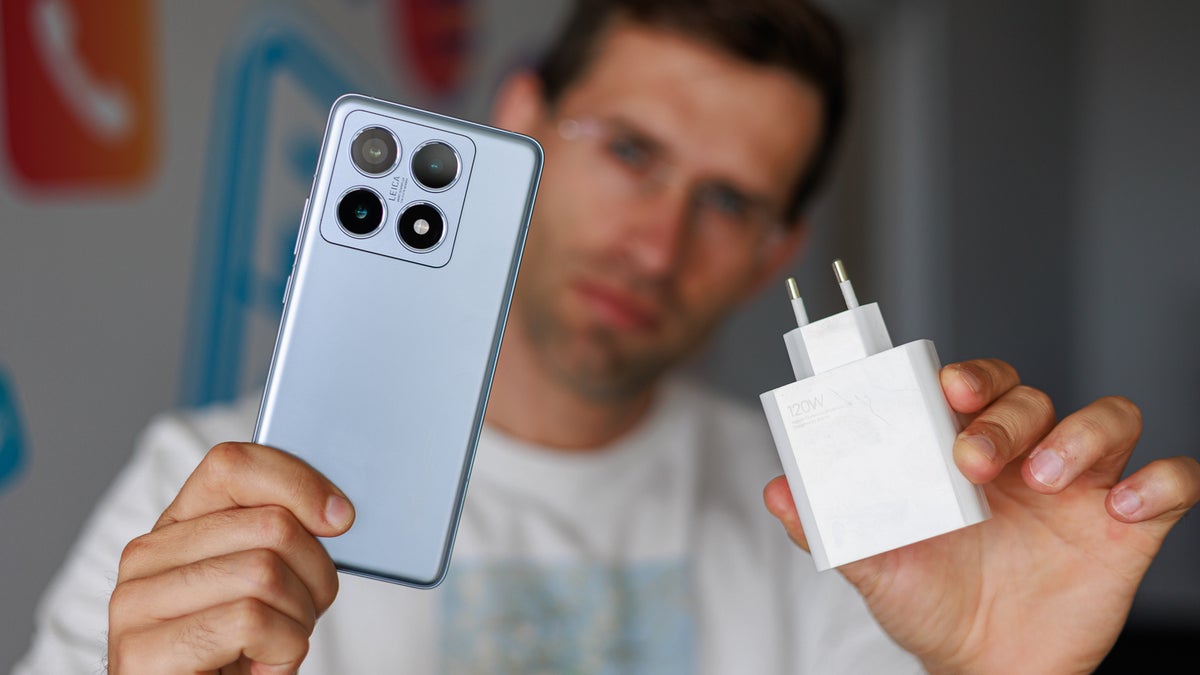Apple, Samsung, and Google seem notoriously slow to adapt to the new times, especially when it comes to charging. Once, their flagships were met with a ‘Hell, yeah!’ Nowadays, it’s usually an ‘Oh, no!’
Most other manufacturers, especially the multitude of China-based manufacturers have solved the charging “problem” a long time ago. These brands are not just playing catch-up; they’re setting the pace for the industry.
Most Android flagships coming from OnePlus, Oppo, Xiaomi, or Huawei these days supports extremely fast wired charging. Some start at 100W, but often way more than that. Vivo has a few devices that can get charged at 200W. Xiaomi’s Redmi has unveiled a 300W charging solution, while Realme, a subsidiary of Oppo, has recently announced plans for a blazing-fast 320W charging.
Extraordinary.
Just the other day, for example, the Xiaomi 14T Pro walked into our office for a full review, and one of the first benchmarks that we ran was the wired charging. The latest Xiaomi flagship supports 120W wired charge and 50W wireless charging, pretty tame in comparison with the numbers shared just a few sentences above, but still way ahead of your regular Pixel, iPhone, or Galaxy.
Well, we got the Xiaomi 14T Pro fully juiced up from 0% to 100% in just 23 minutes (Xiaomi advertises 19 minutes), which is an exceptionally quick result!
The fastest-charging phones aren’t the usual suspects
Notice anything? Yep, no Samsung, no Apple, no Google.
Why have we normalized slow charging?
It’s not us, the regular Joe’s and plain Jane’s, that have caved in and “accepted” that Samsung, Google, and Apple phones simply refuse to let their devices charge truly fast and routinely lose the race to just about any Chinese smartphone out there in terms of fast charging.
The most often cited and widely accepted reason for the slow charging is battery health. Fast charging at high wattage generates heat, and heat is the natural predator of your phone’s battery. This thermal stress leads to faster degradation of the battery’s internal components, reducing its capacity to hold a charge and shortening its lifespan.
Manufacturers have tried to address that. Years ago, OnePlus redesigned how its charging tech managed heat. Instead of increasing the voltage, which would result in more heat buildup within the phone, they increased the amperage while keeping the voltage steady.
This approach, initially introduced with Dash Charge, directed more heat to the charger itself rather than the phone’s battery, keeping it cooler during the charging process. This method showcased that fast charging and battery preservation don’t have to be mutually exclusive, as long as heat is handled effectively.
OnePlus’ Dash charging evolved to Warp charging, and is still around, super quick and awesome.
Let’s stop settling for less, it’s time to demand more
See, phones are appliances. We shouldn’t put them on a pedestal and worship them. We should use them without letting them use us. They should fit within our busy lifestyles, not the other way around.
Pampering your phone’s battery isn’t going to make it last forever. Enabling the charge limit on your iPhone to 80% will potentially safeguard the health of your battery a little, but you will also be axing your potential battery life, which is a bad compromise.
I say, let us, the users, choose whether we prioritize fast charging or battery health. Make the phone of tomorrow capable of charging fast if necessary, and leave it to us to decide what’s more important.
Apple, make an iPhone with 70W charging and see demand for your 70W MacBook charger skyrocket. Let your iPhones be chargeable in under 40 minutes, and you will receive back some of your lost street-cred.
Google, be courageous for once, your Pixels are already top-tier phones, beat your biggest rivals by doubling the charging speeds for the commemorative Pixel 10 lineup.
We need to stop normalizing slow charging. The technology is here, and the choice should be ours. Let’s demand more from our devices—they’re supposed to serve us, not hold us back.
Apple, Samsung, Google: It’s time to catch up.
